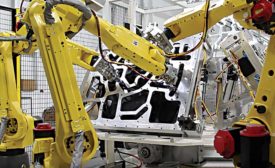Motion Control
Vision Enables Flexible Assembly
A new, flexible assembly system produces the same volume and part mix as six older machines.
January 5, 2017
Modular Automation Components
A wide range of ready-to-install components and subassemblies enable manufacturers and integrators to quickly build custom automated assembly machines.
November 7, 2016
Industry 4.0: Myths vs. Reality
Digital convergence is ushering in a new era of smart factories.
November 3, 2016
Automated Processing of Small RF and Coax Cables
Ultra-miniature RF cable assemblies require special equipment for cutting, stripping and crimping.
October 4, 2016
Maintaining Control in Vertical Ballscrew Applications
A spring-engaged, air-released servomotor brake can prevent back-driving of a ballscrew in vertical motion applications.
October 3, 2016
Never miss the latest news and trends driving the manufacturing industry
Stay in the know on the latest assembly trends.
JOIN TODAY!Copyright ©2024. All Rights Reserved BNP Media.
Design, CMS, Hosting & Web Development :: ePublishing











